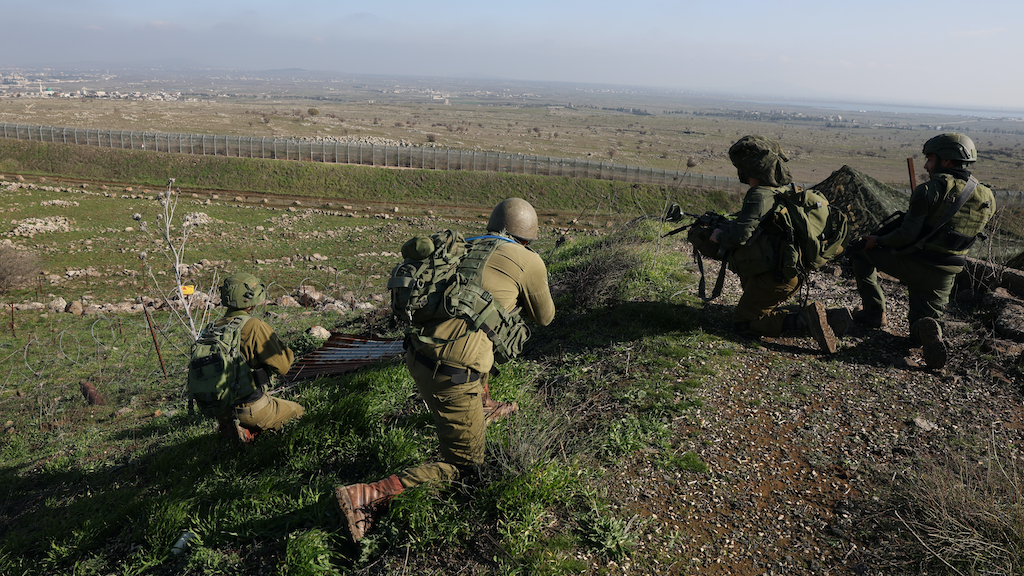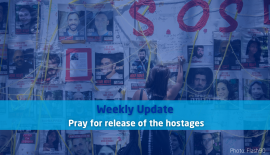Iran, Hezbollah and the final phase in the multi-front war against Israel
Even though all eyes are on the war between Israel and Hamas in Gaza, this front is in fact the least important in Israel’s current multi-front war. The reason for this is quite simple: Hamas and Palestinian Jihad in Gaza are isolated and do not pose an existential threat to Israel certainly not now after they were handed devastating blows by the IDF.
Hezbollah and the Ansar Allah (Houthis) militia in Yemen, on the other hand, are much more dangerous because they are not isolated, have much better armaments, and essentially operate as a division of Iran’s Islamic Revolutionary Guard Corps.
Hezbollah and Ansar Allah are also a potential danger to world peace for the aforementioned reasons with the latter already rapidly becoming a threat to world peace due to the continuing attacks on maritime traffic in the Red Sea.
Hezbollah’s activities are not limited to Lebanon as the terror group is also active in Syria and Yemen, where the Lebanese terror group is now helping Ansar Allah set up its own weapons production lines.
This became necessary because Ansar Allah’s supply lines of weapons from Iran are under pressure due to the presence of an international maritime coalition, which in addition to neutralizing attacks on cargo ships and tankers, also intercepts weapons shipments from Iran to Yemen.
Hezbollah is even present in South America where, in addition to committing or organizing terrorist attacks, the organization is mainly involved in drug smuggling, raising funds, and money laundering.
Back to Hezbollah’s current war with Israel.
So far, this has remained a low-intensity war with back-and-forth attacks every day as both Israel and Hezbollah have had an interest in keeping this war on the back burner.
Israel does not want a war in Lebanon because the campaign against the Palestinian terrorist groups in Gaza has (so far) required the deployment of a large number of reserve units. Hezbollah’s problem is that a large part of the Lebanese population does not want a new war with Israel.
But the main reason the terror organization has not used its full potential is that Iran has not given the order to use Hezbollah’s full potential.
From the beginning of the current war, Iran has worked according to a clear plan with four phases. This phase plan was drawn up by Qassem Soleimani, the liquidated commander of the Quds Force of Iran’s Islamic Revolutionary Guard Corps.
Soleimani’s vision was to create a “ring of fire” around Israel, in other words, a multi-front war. This plan is currently being implemented by Ishmail Qaani, Soleimani’s successor, and was approved by Iran’s leader Ayatollah Ali Khamenei, who agreed to provide unlimited funds at the beginning of the war.
We are now in phase three of this war with currently five fronts and they are Gaza, Lebanon, Syria to a lesser extent, Yemen, and a front in Israel’s heartland of Judea and Samaria.
Qaani was in Beirut at the end of February where he met with Hezbollah leader Hassan Nasrallah and the local leadership of Hamas, which has troops in southern Lebanon.
Reportedly, Ghaani criticized Hezbollah for the way it has operated against Israel thus far. In the eyes of the Quds commander, Hezbollah has been ineffective in its war of attrition against Israel and has wasted troops and ammunition.
This criticism probably had everything to do with the final scenario in phase three when Hezbollah will use its full potential and start targeting Israel with long-range missiles that have GPS guidance systems. Before the war, Hezbollah had two hundred thousand rockets that could reach all parts of Israel, according to the Israeli think tank INSS.
In Israel, barrages of more than 1,500 rockets per day are expected, which will pose problems for air defenses.
We have learned from the wars in Gaza that the Iron Dome anti-missile shield is not waterproof when large numbers of rockets are fired simultaneously at cities in Israel.
Hezbollah will try to destroy vital military and civilian infrastructure in Israel with these barrages, Hezbollah leader Nasrallah has repeatedly said openly. It is known that Hezbollah and Iran have mapped all this infrastructure through espionage and with the help of satellite photos.
Civilian infrastructure experts warn of power outages that will cripple 60 percent of Israel’s electricity grid for a long period and the consequences for the Israeli economy and society in this scenario will be devastating.
In the chaos that will then arise, Iran will further activate the front in Syria and the so-called Golan Liberation Brigade will be deployed. Soleimani set up this brigade which consists largely of Shiite fighters whom the liquidated Quds commander brought to Syria from Afghanistan, Pakistan, and Yemen.
Soleimani’s scenario also envisaged the further internationalization of the conflict, and in fact, we see this happening now in Yemen but also in Syria and Iraq where the militias created during Soleimani’s time have now steadily increased their attacks on US forces.
In this context, it is also useful to look at Israeli security experts’ latest warnings about a possible front in Jordan. The military expert of the newspaper Yediot Acharonot Nadav Eyal wrote in early March that there are warnings within the IDF about transferring the Shia militias from Iraq to the Jordan Valley.
Although Jordan has a peace agreement with Israel, it has been behaving increasingly hostilely to it since the start of the war in the Jewish state. It therefore does not seem inconceivable that Jordan will be drawn into the war, just as happened during the Six-Day War in 1967.
In the fourth phase of Iran’s plan to destroy Israel, when chaos in the Middle East is complete, the Islamic Republic will break out to nuclear weapons. If we now take into account that the IAEA director announced on March 5 that his organization has lost track of monitoring the progress that Iran is making in the development of its nuclear program, we see that almost everything is going according to plan for Iran
“The agency has lost continuity of knowledge on the production and inventory of centrifuges, rotors and bellows, heavy water and uranium ore concentrate,” the IAEA director said.
What Israel can do now to avoid this doomsday scenario is to carry out the pre-emptive strike on Hezbollah that was proposed early in the war by Herzi Halevi, the IDF chief of staff.
Political leaders in Israel have repeatedly made it clear that the IDF and IAF are capable of returning Lebanon to the Stone Age with a pre-emptive strike against Hezbollah. Such an attack now seems more likely by the day.






